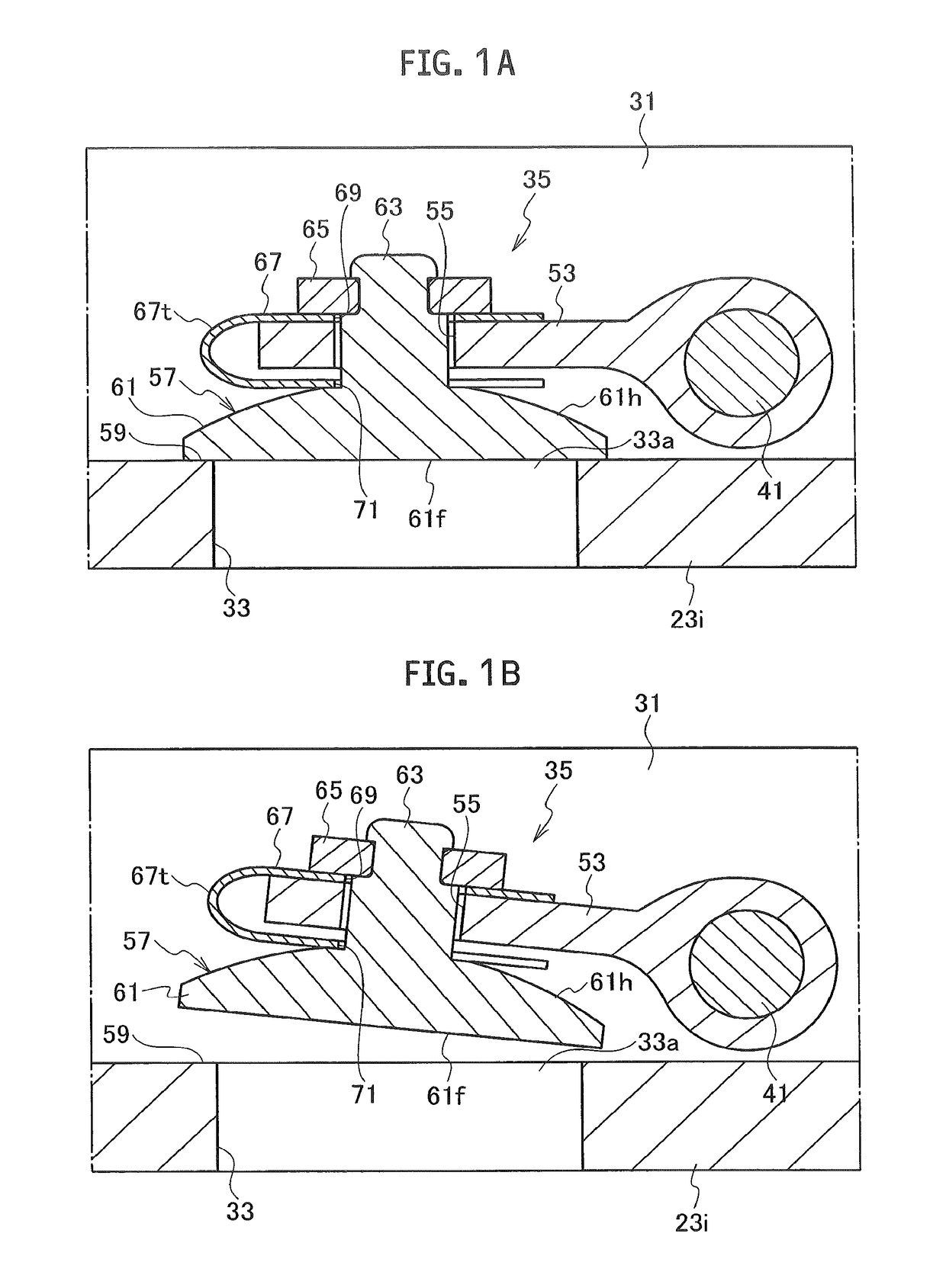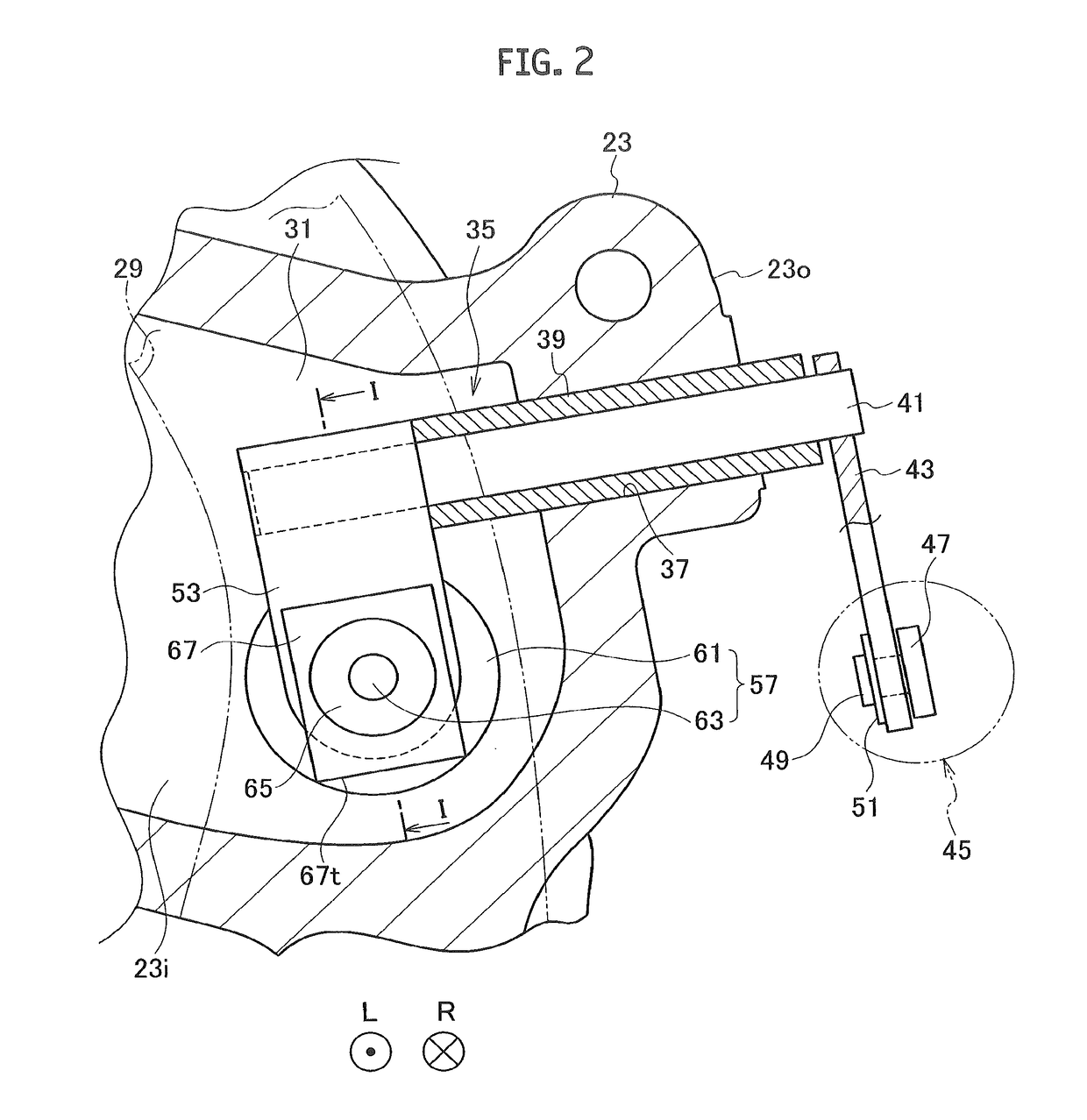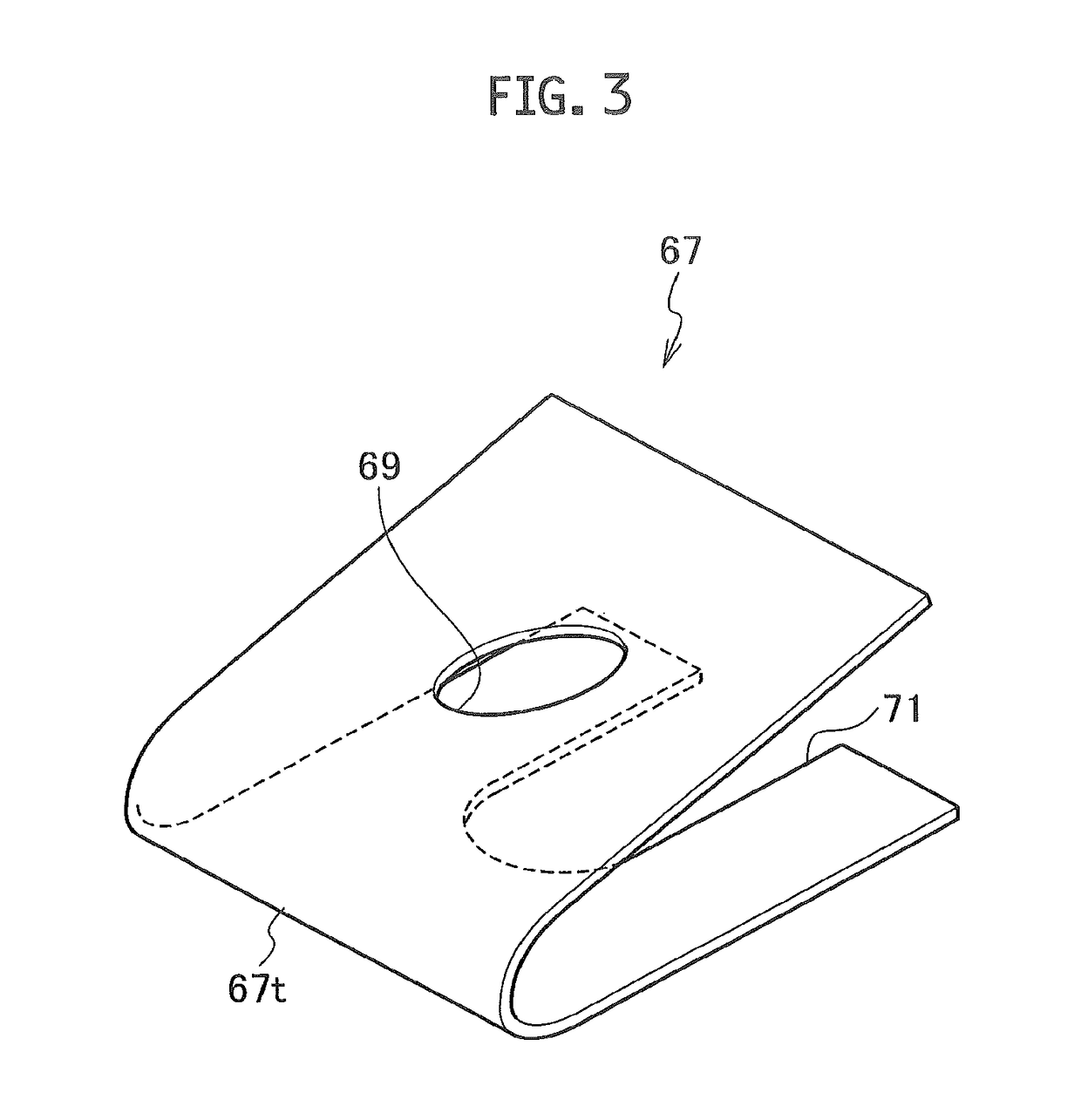Variable-flow-rate valve mechanism and turbocharger
a variable-flow-rate valve and valve mechanism technology, which is applied in the direction of combustion engines, machines/engines, engine fuctions, etc., can solve the problems of vibrational contact, affecting the assembly performance deteriorating the quietness of the waste gate valve, so as to reduce the noise of chattering, improve the quietness of the variable-flow-rate valve mechanism, and suppress the occurrence of vibrational conta
- Summary
- Abstract
- Description
- Claims
- Application Information
AI Technical Summary
Benefits of technology
Problems solved by technology
Method used
Image
Examples
first embodiment
Modified Example of First Embodiment
[0053]As shown in FIGS. 7A and 7B, in a modified example of the first embodiment of the present disclosure, instead of the configuration in which the one end portion of the leaf spring 67 is located between the leading end portion of the attachment member 53 and the stopping member 65 and is fixed to the attachment member 53 (see FIG. 1A), the one end portion of the leaf spring 67 is located between the leading end portion of the attachment member 53 and the head portion 61h of the valve body 61 and is pressed to the attachment member 53 by the elastic force of the leaf spring 67. Here, among the multiple constituents of the modified example of the first embodiment, those corresponding to the constituents of the first embodiment are denoted by the same reference signs in the drawings.
[0054]The modified example of the first embodiment also achieves the same operation and effect as the first embodiment does.
[0055]Although the illustration is omitted...
second embodiment
[0056]As shown in FIGS. 8A, 8B, and 9, in a second embodiment of the present disclosure, the vehicle turbocharger 1 is equipped with a different waste gate valve 73 instead of the waste gate valve 35 (see FIG. 1). The waste gate valve73 according to the second embodiment has a similar configuration to that of the waste gate valve 35 according to the first embodiment. A description will be given below only of portions of the configuration of the waste gate valve 73 which are different from those of the waste gate valve 35. Here, among multiple constituents of the second embodiment, those corresponding to the constituents of the first embodiment are denoted by the same reference signs in the drawings.
[0057]As shown in FIGS. 8A, 8B, and 10, a base end portion of an attachment member 75 is integrally connected by fillet welding or the like to the leading end portion of the stem 41. The attachment member 75 includes a folded-back portion 75t on its middle side, which is manufactured by p...
PUM
 Login to View More
Login to View More Abstract
Description
Claims
Application Information
 Login to View More
Login to View More - R&D
- Intellectual Property
- Life Sciences
- Materials
- Tech Scout
- Unparalleled Data Quality
- Higher Quality Content
- 60% Fewer Hallucinations
Browse by: Latest US Patents, China's latest patents, Technical Efficacy Thesaurus, Application Domain, Technology Topic, Popular Technical Reports.
© 2025 PatSnap. All rights reserved.Legal|Privacy policy|Modern Slavery Act Transparency Statement|Sitemap|About US| Contact US: help@patsnap.com



